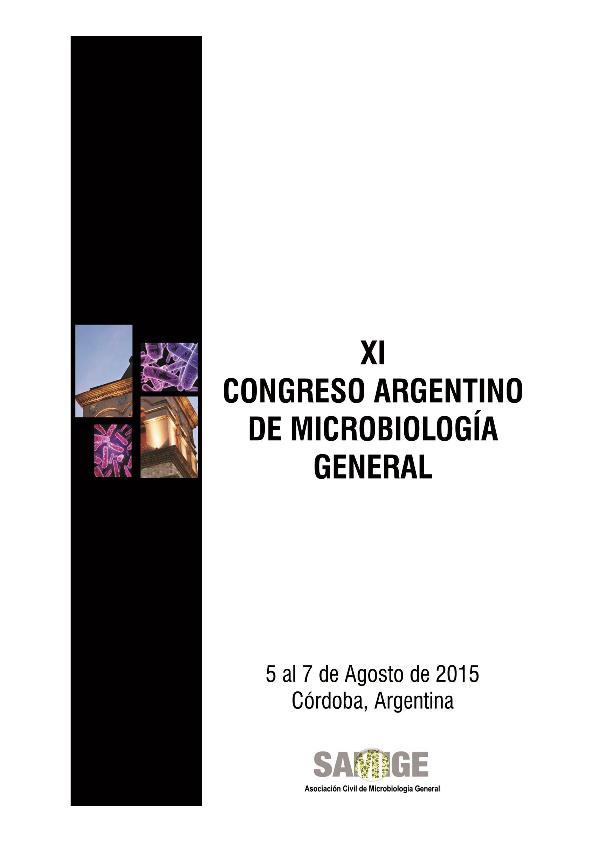Evento
Extreme-halophiles: their role in the arsenic biogeochemical cycle
Tipo del evento:
Congreso
Nombre del evento:
XI Congreso Argentino de Microbiología General
Fecha del evento:
05/08/2015
Institución Organizadora:
Sociedad Argentina de Microbiología General;
Título del Libro:
XI Congreso Argentino de Microbiología General
Editorial:
Sociedad Argentina de Microbiología General
Idioma:
Inglés
Clasificación temática:
Resumen
Biofilms, mats and microbialites dwell under extreme environmental conditions (high salinity, extreme aridity, pH and arsenic concentration) in the Argentinean Puna and the Atacama Desert. Microbial communities inhabiting those ecosystems are poorly known. Arsenic metabolism is proposed to be an ancient mechanism in microbial life. Besides, some bacteria and archaea are not only able to use detoxification processes to grow under high arsenic concentration, but also, some of them are able to exploit arsenic as a bioenergetic substrate in either anaerobic arsenate respiration or chemolithotrophic growth on arsenite. Only four aioAB coding for arsenite oxidase and two arrA coding for arsenate reductase sequences from haloarchaea were previously deposited in the NCBI Database, but have not been reported in the literature. The arrA arsenate reductases are reliable indicators of anaerobic As (V) respiration and catalyze the electron transfer to the As (V) terminal acceptor in dissimilatory arsenatereducing prokaryotes (DARPs). In this work, we are presenting our first steps in the study of the arsenic biogeochemical cycle in these ecosystems. Thus, the aim of this study was to isolate and to study the arsenic metabolism genes of the isolated extreme halophile microorganisms as well as to test the growth in minimal medium using different carbon sources. Mats and microbialites samples were taken from the water’s edge of Laguna Tebenquiche, Laguna Brava (Salar de Atacama, Chile) during December 2012 and from gaylusite crystals (Laguna Diamante) in August 2014. Samples were enriched and plated in WS medium supplemented with arsenic (AsIII 0.5mM and AsV 20mM). Arsenite oxidase (aioB) and Arsenate reductase (arrA) primers specific for haloarchaea were designed using PrimerProspector software. Selected primers were aioB-1190F (5’-GCTCMTSACCGGCAGCGTCG-3’), aioB-1507R (5’-YGATCTCGTCGATGTCGGCG-3’), arrA-417F (5’CCCGAGTTCGAGCCSATCTC-3’) and arrA-614R (5’GCRCAGATCGMGCTGTGGGA-3’). In order to identify the isolates we used Archaea-specific primers for 16S rDNA gene amplification: 344F (5´- ACG GGG YGC AGC AGG CGC GA-3´) and 915R (5´- GTG CTC CCC CGC CAA TTC CT -3´). Fragments of 577 bp, 317pb and 197pb were obtained from 16S rDNA, aioB and arrA genes respectively. Universal primers 27F and 1492R were used to amplify 16S rDNA in bacterial isolates. 25 isolates belonging to Archaea and Bacteria Domain were obtained; they are related to the Phylum Euryarchaeota, Firmicutes and Proteobacteria. AioB and arrA genes were found in most of the isolates and DNA from the samples (mats, microbialites and biofilm). The best carbon source tested was pyruvate and acetate, being pyruvate better in all cases. Promising results were obtained in the search of organisms able to use arsenic in their bioenergetic metabolism. More studies are underway to try to better understand these very interesting systems.
Palabras clave:
HALOFILOS
,
EXTREMOS
,
CICLO BIOGEOQUIMICOS
,
ARSENICO
Archivos asociados
Licencia
Identificadores
Colecciones
Eventos(PROIMI)
Eventos de PLANTA PILOTO DE PROC.IND.MICROBIOLOGICOS (I)
Eventos de PLANTA PILOTO DE PROC.IND.MICROBIOLOGICOS (I)
Citación
Extreme-halophiles: their role in the arsenic biogeochemical cycle; XI Congreso Argentino de Microbiología General; Cordoba; Argentina; 2015; 1-3
Compartir




